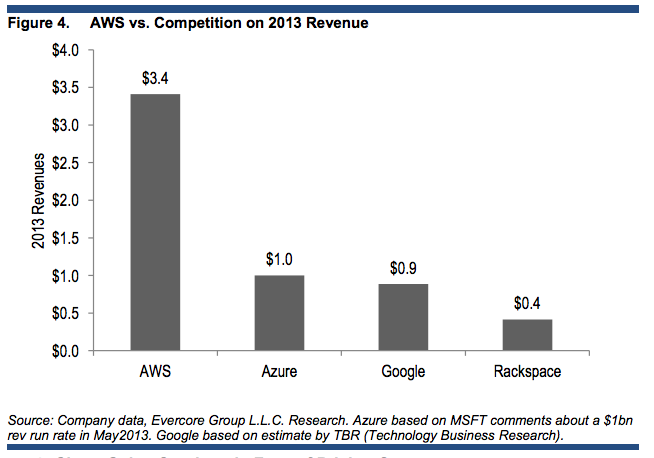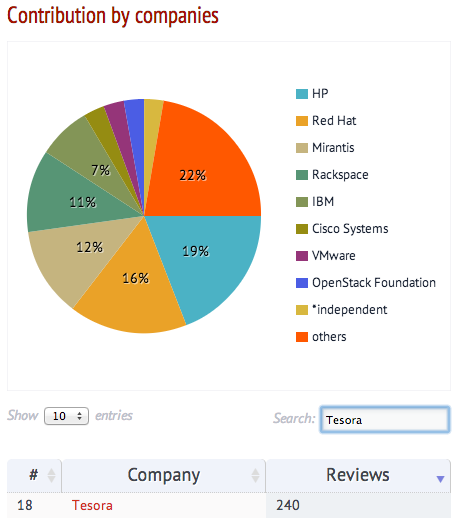Amazon Web Services (AWS) sets the pace for innovation in cloud and sets pricing. For all of the “Everything is awesome!” singing surrounding the open-source cloud-computing platform OpenStack, it still lags AWS in almost every feature that cloud customers value.
Most attempts to improve OpenStack come from longtime open-source contributors like Red Hat. But one new entrant, Tesora, is something of a johnny-come-lately to open source. Last week, Tesora announced that it was open sourcing its previously proprietary database virtualization engine as part of its commitment to OpenStack’s Trove database-as-a-service (DBaaS) project. Like other DBaaS offerings, Trove aims to provide customers with appropriate levels of database capacity depending on their requirements at any given time without tying them to particular database servers.
While Tesora still has much to prove, it claims that OpenStack’s DBaaS now delivers superior functionality to Amazon’s competing DBaaS, known as RDS. But “superior functionality” may not be enough to unseat the AWS behemoth.
Just How Big Is AWS?
After all, AWS is not merely the 800-pound gorilla in cloud computing. As of today, it’s the only gorilla. According to new research from research firm Evercore, AWS claimed 37% of the $9 billion infrastructure as a service (IaaS) market in 2013. That commanding lead is only going to become more pronounced, as the IaaS market is growing at a 45% clip, while AWS is growing by 60%.

Impressive as its revenue numbers are, money doesn’t tell the whole story, as Evercore analyst Ken Sena writes:
When looked at on the basis of capacity (as opposed to revenues), Amazon has more than five times all the other cloud IaaS providers combined, which includes Microsoft, Google, IBM SoftLayer, Verizon Terremark, Rackspace, VMware, HP, GoGrid, Joyent, Dimension Data, CSC, Fujitsu, Virtustream, and CenturyLink (Gartner source). In addition, on the basis of revenues, AWS still has over three times the scale of Azure, Google, and Rackspace.
Nor are competitors’ price cuts making much of an impact on AWS, according to Sena:
AWS dropped prices on AWS 13 separate times over 2013, flat with 2012, but still equal to the number of reductions by Azure, Google, and Rackspace, combined. These continuous pricing cuts have helped Amazon stay a step ahead of their competition, allowing it to gain share in the marketplace. This has led to Amazon increasing share from 24% in 2010 to 39% of the IaaS market according to Gartner by 2013.
Even so, some competitors are gearing up to mount a serious challenge. Google, in particular, has the heft and margin to compete aggressively with AWS. Already it has pulled key AWS personnel like Miles Ward (@milesward) to its roster (Ward is perhaps even more prominent for his significant role with Obama’s technology team in 2012), and shows no signs of slowing as it battles AWS for corporate clouds.
Getting Into The Open Source Groove
But maybe, just maybe the right way to beat AWS isn’t with an equally proprietary stack, but with open source instead. That’s the OpenStack approach, and it may have received a significant boost on the database side from Tesora’s contribution. While database comes in a distant third to compute and storage in the hierarchy of users’ needs, it’s still an important component of the AWS cloud stack. If OpenStack is going to go toe-to-toe with Amazon, it needs to match or beat its database offering.
First things first, however. Before Tesora can ride the OpenStack wave, it needs to establish its open source bona fides. That’s how open source works: currency is written in code, and you only get to spend once you’ve contributed a significant amount. In this area, Tesora is making progress. For the Icehouse release of OpenStack, Tesora ranked #71 in contributions. For the latest Juno release, it’s #18, according to OpenStack contributor data.

While still a far cry from HP (#1 in the latest release) and Red Hat (#2), it’s progress for a company that started out as a proprietary software company (then known as Parelastic) and has only lately found its way to open source.
Tesora co-founder and CTO Amrith Kumar underlines the company’s “total commitment to open source,” and celebrates Trove’s inclusion as a mainstream OpenStack project. But will either be enough?
Open Source + Feature Richness = Win?
As Kumar told me, “A lot of OpenStack is about essentially knocking off features that customers get with AWS,” which thus far hasn’t been enough. Tesora, he said, has upped OpenStack’s database game by …
bringing to OpenStack and Trove some key features for DBaaS around horizontal scale-out that RDS doesn’t yet offer. We’re excited about getting ahead of Amazon with innovation. You can scale almost infinitely with our technology and do some amazing things around packing VMs more densely than you can on RDS. We have even demonstrated that we can produce better than linear scalability with RDS instances in the Amazon cloud!
That’s nice—but again, is it enough? And is DBaaS the right place to start?
Maybe not, according to data in Tesora’s own survey. Survey respondents tout OpenStack as second only to VMware as the preferred private cloud platform (~15% are using VMware’s vCloud while 11% were already running OpenStack private clouds), and Google Compute Engine (in use at 16% of respondents) appears to be making gains against AWS (24%). Such data suggests that enterprises might be open to change.
Yet just under 10% of respondents rely on a DBaaS today, and a mere 11% more expect to implement a DBaaS in a private cloud within the next 24 months. Whatever the functionality Tesora’s contribution brings to OpenStack, then, it may not be enough.
Kumar acknowledges that a lot of work remains to be done, and indicates that “the transition to DBaaS will probably accelerate as the market catches up with early adopters and more people become familiar with the database as a service model as well as the capabilities of OpenStack Trove.”
But it’s unclear that he’s right.
Convenience Wins
See also: In Big Companies, The Public Cloud Is Leaving The Private Cloud In The Dust
As I wrote recently, the private cloud keeps getting trounced by public cloud and, specifically, AWS. As nice as it sounds to run private infrastructure like a public cloud, it turns out to be really, really hard. AWS keeps booming because it removes all that complexity and makes buying infrastructure, including databases, as simple as entering a credit card number.
Tesora is doing the right thing by contributing code to make OpenStack better. But the company and the project continue to have a serious uphill battle in front of them, with the giant Amazon standing at the top of the hill.
Lead image courtesy of Shutterstock









